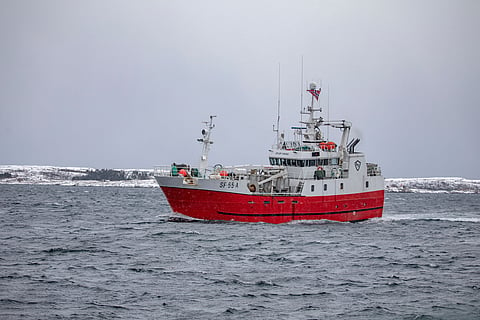

After several rounds of negotiations, Norway and the EU have reached an agreement on the exchange of quotas and mutual access to fishing in each other's zones. This traditional deal between the two parties has been particularly demanding this year, as the quotas traditionally fished by Norwegian vessels are now located in the British zone, outside the territory of the European Union.
For this reason, the Norway-EU bilateral agreement has been joined this year by a tripartite agreement with the UK in which, after three rounds of negotiations, a deal has finally been reached on the management of North Sea cod and herring.
The bilateral fisheries agreements between Norway and the EU for 2024 concern the North Sea, Skagerrak, and also set quotas in line with the so-called neighborhood agreement with Sweden, i.e., fishing by Swedish vessels in the Norwegian zone.
Minister Myrseth has expressed her satisfaction with the deals reached. "We have had a good tone in the negotiations, and the result is balanced," she stated. "Securing agreements with those we share stocks with, well before Christmas, is a prioritized task for the government."
With the quota exchange deal in place, Norwegian fishermen can now fish the opportunities Norway has acquired from Greenland, including shrimp, Greenland halibut, and redfish, and in the EU zone, such as roundnose grenadier. The EU, on its part, has acquired a cod quota in the Barents Sea of 9,981 tons.
"With these agreements in place, Norwegian fishermen have predictability and the opportunity to fish the quotas outlined in the agreements when it is rational and economical. It was important for both parties to get this in place, and I am very pleased with it," said Cecilie Myrseth.
As with Norway, the EU and the United Kingdom also negotiated their fishing opportunities for 2024 bilaterally. However, as mentioned, following the UK's exit from the European Union, North Sea agreements must be negotiated on a tripartite basis between Norway, the EU, and the UK. In the case of the Scandinavian country, this becomes particularly important when it comes to the management of North Sea cod and herring.
The parties have agreed on a total cod quota of 31,301 tons, 15% more than the previous year, which includes cod to the west of Scotland. The quota reserved for the North Sea is 24,900 tons, of which 4,233 tons are for Norway. For herring, a total quota of 532,166 tonnes has been agreed, 28.3% more than in 2023. In this case, the Norwegian quota is 147,994 tons.
In addition, the total quotas for haddock - 73,815 tons, up 25%, 34,776 tons for Norway - and haddock - 101,420 tons, up 17.8%, 23,327 tons for Norway - will increase next year.
"It is gratifying that we have reached an agreement with the EU and the UK. This means that we have agreed on quotas for important stocks that we manage together in the North Sea. This is crucial for sustainable management," concluded Minister of Fisheries and Oceans Cecilie Myrseth.
